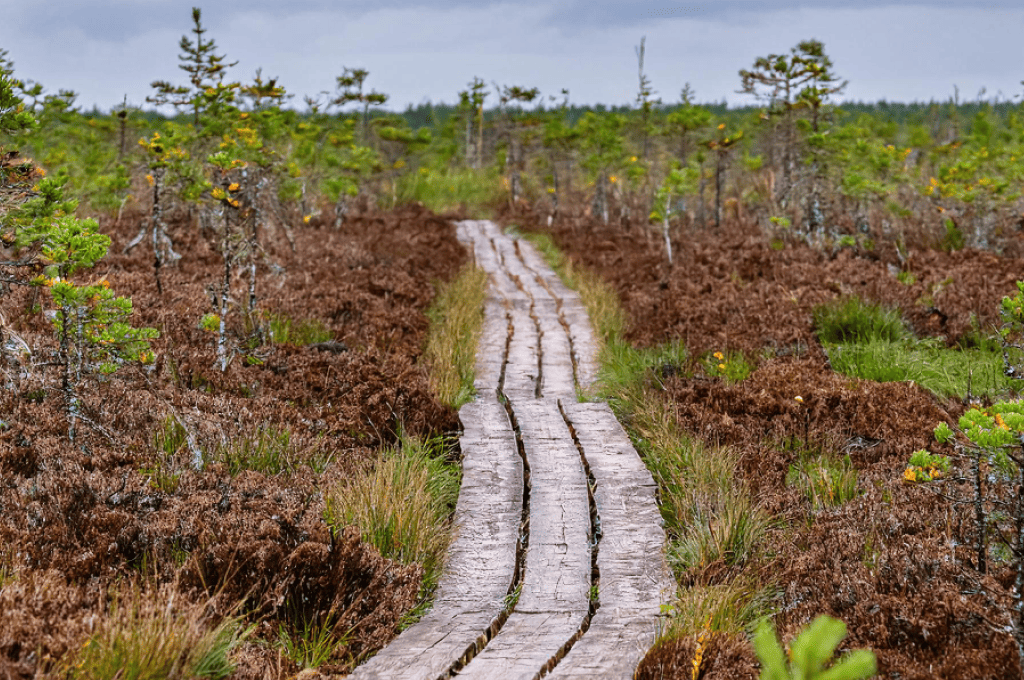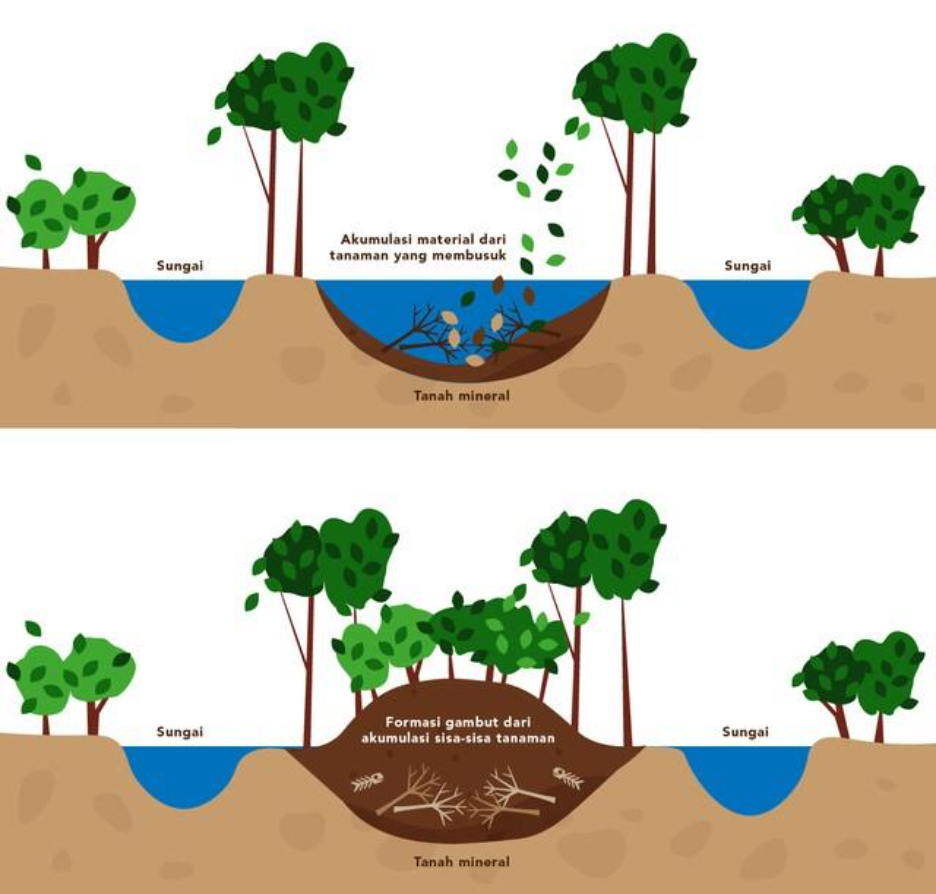
Product walkthrough, trial, POCs, enterprise offering, support and more. Speak with one of our specialists.


Product walkthrough, trial, POCs, enterprise offering, support and more. Speak with one of our specialists.

Climate changes

According to the FAO, peatlands store more than 30 percent of the world's carbon[Ref], even though they cover only 3 percent of the Earth's surface. The carbon stored in peat plays an essential role in maintaining global climate balance. These lands have formed naturally over thousands of years through the slow and steady accumulation of organic matter. So how do peatlands form, and why are they important for the planet’s sustainability?
A peatland is a type of wetland formed from the accumulation of decaying plant material in waterlogged conditions. The slow decomposition process creates thick layers of organic matter known as peat. These layers store large amounts of carbon, acting as natural carbon sinks that help reduce greenhouse gas emissions.
Peatlands are found in various tropical regions, including Indonesia. In Indonesia, they are spread across Sumatra, Kalimantan, and Papua. The water-saturated conditions make these lands low in oxygen, causing decomposition to occur very slowly. This allows carbon to remain stored for millions of years without being released into the atmosphere.

At first, plant remains, leaves, and roots accumulate on the surface of wetlands. This process occurs slowly because the waterlogged environment limits the activity of microorganisms that break down organic material. Over the years, a thin layer forms the base of the peat.
Because the environment is wet and oxygen-poor, decomposition happens very slowly. Microorganisms can only decompose a small fraction of the organic matter, leaving most of the carbon trapped in the soil. Over time, more layers of organic material accumulate, sometimes reaching several meters thick.
Each layer contains carbon that has been stored for hundreds to thousands of years. This natural and gradual process is extremely effective at keeping carbon out of the atmosphere. Water plays a key role in peat formation, maintaining anaerobic conditions, slowing decomposition, and preventing carbon release. Therefore, draining peatlands for human activities can lead to massive carbon emissions into the atmosphere.
1. Carbon Storage
One of the main benefits of peatlands is their function as natural carbon sinks. By storing millions of tons of carbon, peatlands help reduce greenhouse gas emissions and stabilize the global climate.
2. Biodiversity
Peatlands serve as habitats for a wide variety of unique flora and fauna, including endemic species. This ecosystem provides food, shelter, and living space for wildlife that is difficult to find elsewhere.
3. Flood Control
Peat functions as a natural sponge that absorbs rainwater. The thick organic layer helps retain water, reduce flood risks in surrounding areas, and maintain hydrological balance.
4. Sustainable Economic Source
Peatlands can also support local economies through ecotourism and sustainable forest product management. These activities provide alternative income sources without damaging the fragile peat ecosystem.
One of the biggest challenges in maintaining peat ecosystems is land conversion. Human activities such as clearing land for agriculture and plantations often damage the fragile peat layers. The drainage process carried out to support these activities releases large amounts of carbon into the atmosphere as CO₂, contributing to rising emissions and climate change.
In addition, peat fires pose a serious threat, causing widespread impacts almost every year. When peat layers dry out, they become highly flammable, and once ignited, they are much harder to extinguish than fires on mineral soils. These fires are among the largest sources of carbon emissions in Indonesia, making water and vegetation management critical to prevent recurrence.
Another challenge is ecosystem degradation. The destruction of peatlands not only changes the landscape but also threatens the biodiversity that depends on it. Many plant and animal species lose their natural habitats, disrupting ecological balance and weakening the peat's natural carbon storage function.
Peatland restoration is a crucial step to reduce carbon emissions and maintain ecosystem balance. Governments, organizations, and local communities are working together to rehabilitate damaged areas through rewetting, revegetation, and the protection of intact peatlands.
However, the success of restoration efforts depends not only on physical activities in the field. Technology now plays a vital role in ensuring that every step can be monitored and measured accurately. Through the digital approach of Measurement, Reporting, and Verification (dMRV), restoration processes can be tracked using satellite data, IoT sensors, and artificial intelligence (AI) to analyze land cover changes and peat moisture conditions.
Jejakin provides a technology-based system to support the monitoring and measurement of nature-based projects, including peat ecosystems. With transparent data integration, every restoration effort can be continuously verified and evaluated. This ensures that peat recovery is not only successful on the surface but also delivers tangible impacts on carbon sequestration and long-term environmental resilience.
With ongoing restoration efforts and evolving monitoring technologies, peatland protection today goes beyond rehabilitation, ensuring long-term sustainability. The results of these efforts are increasingly visible through both ecological and social benefits.
With proper conservation, peatlands can store large amounts of carbon and reduce greenhouse gas emissions. These ecosystems also serve as vital habitats for unique biodiversity while helping prevent floods through their hydrological functions.
Beyond environmental benefits, peatland conservation creates sustainable economic opportunities for local communities. Every small step taken to protect peatlands contributes to mitigating climate change and preserving vital ecosystems for future generations.
Peatlands are not just parts of nature but also guardians of the climate and life around them. Through proper management and conservation, peat can store carbon, maintain biodiversity, and reduce environmental risks.
Protecting peat means protecting the future. Every action, no matter how small, contributes to maintaining the planet’s balance for generations to come.






















Jejakin’s green programs combine high-tech monitoring, biodiversity restoration, and community-led initiatives to deliver powerful, sustainable change across ecosystems.








